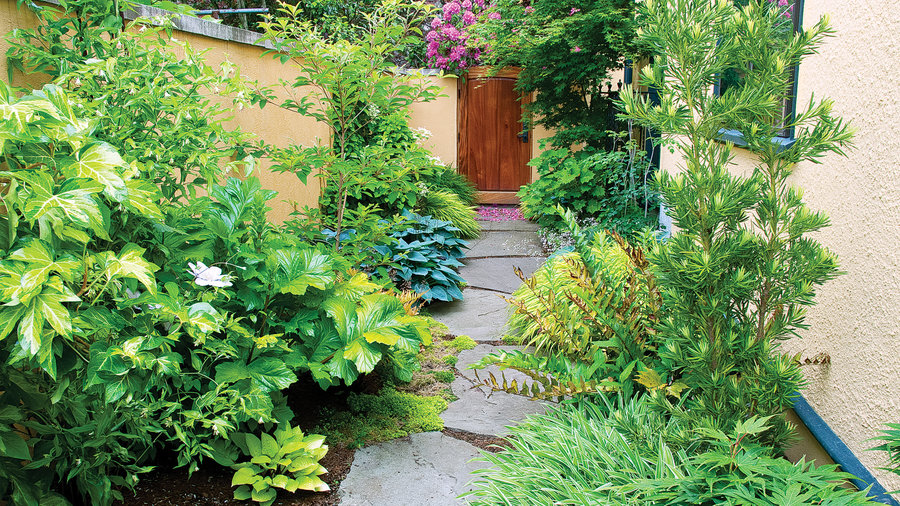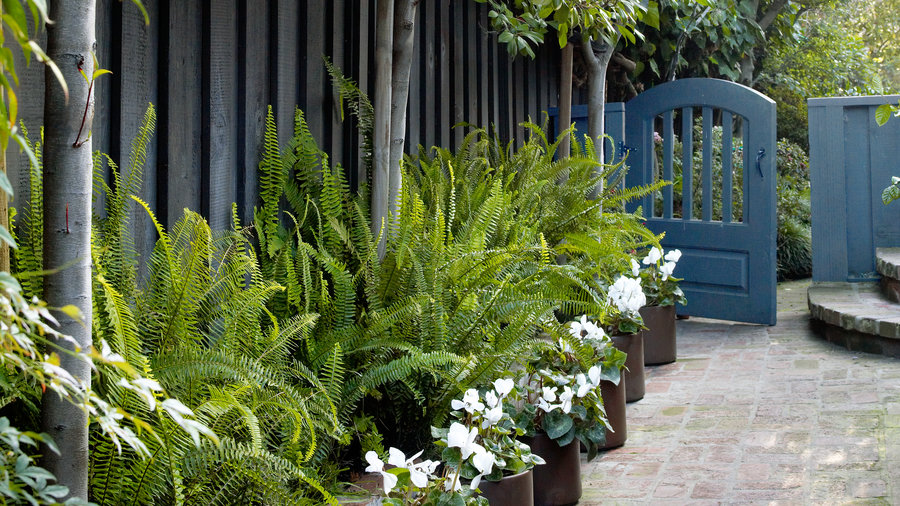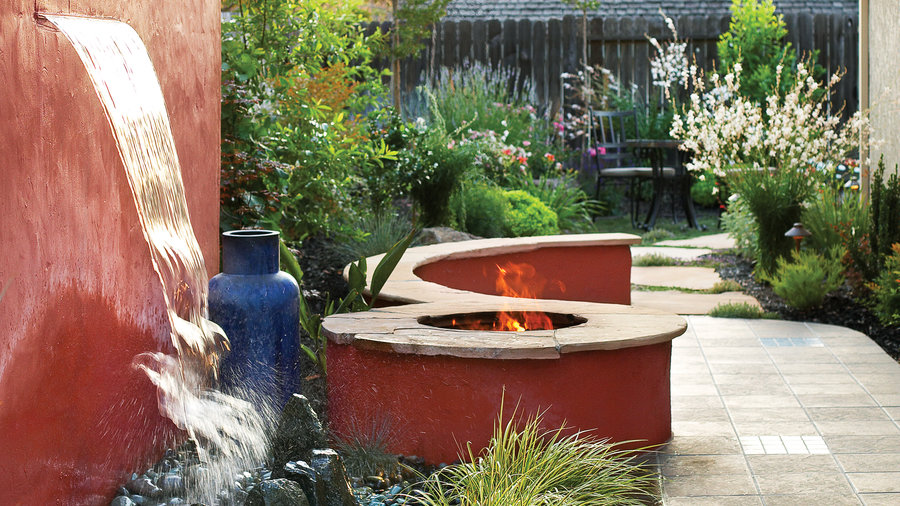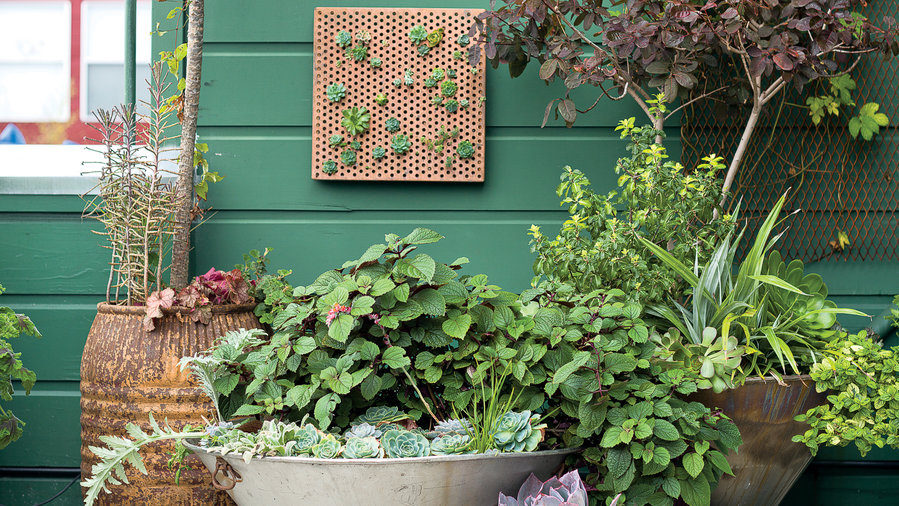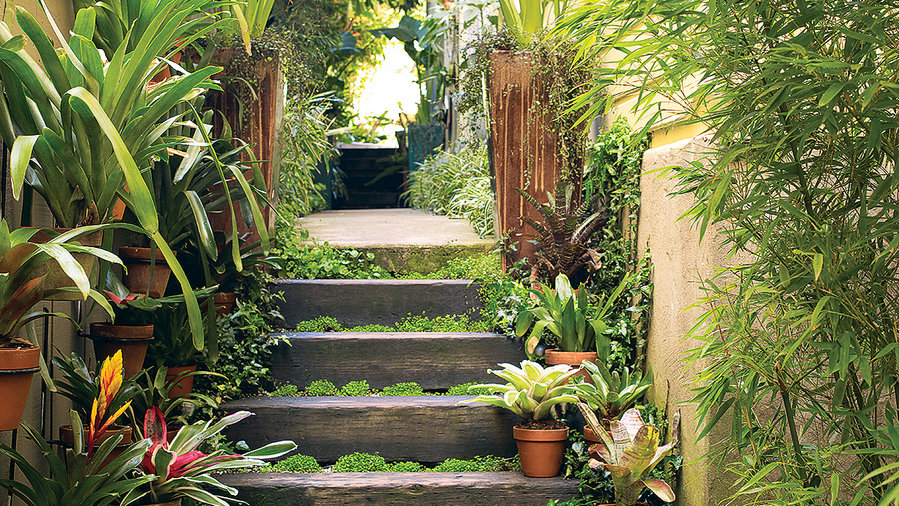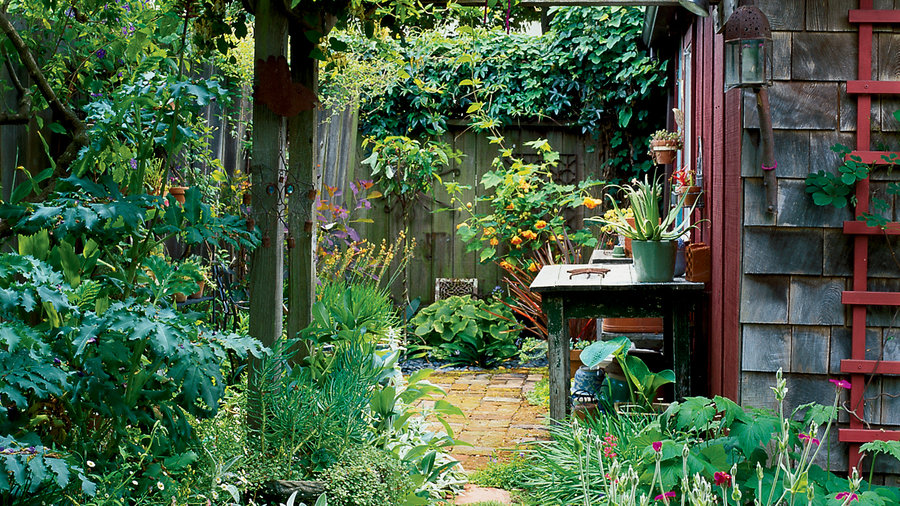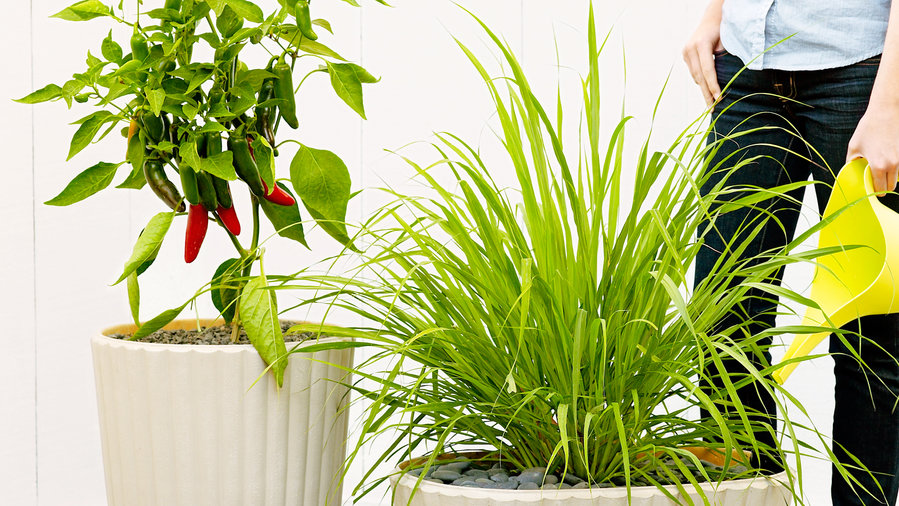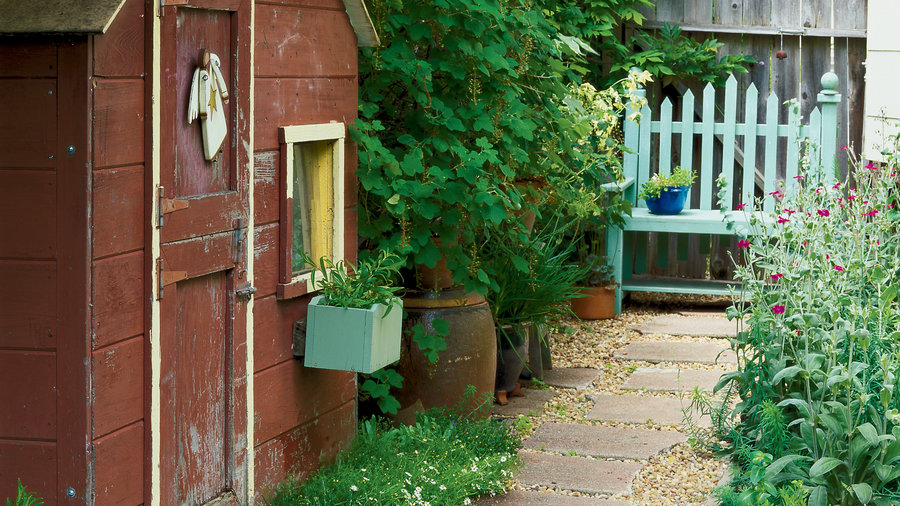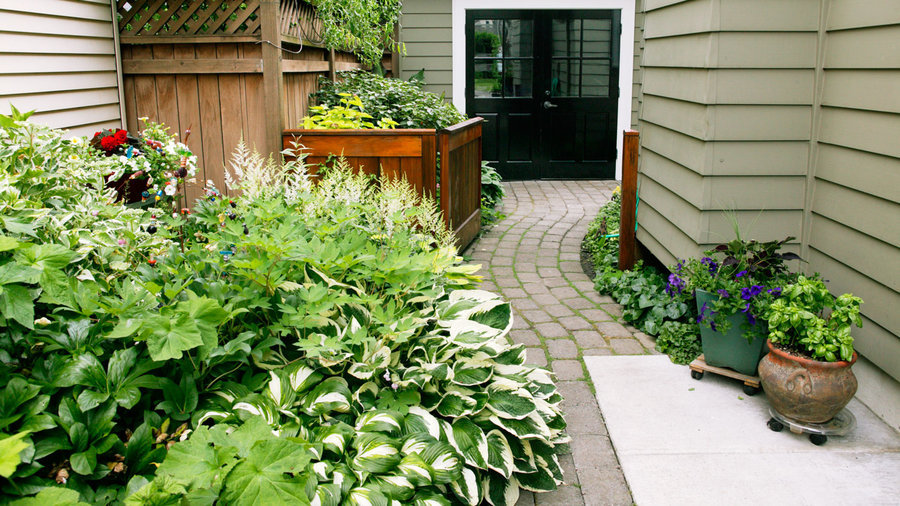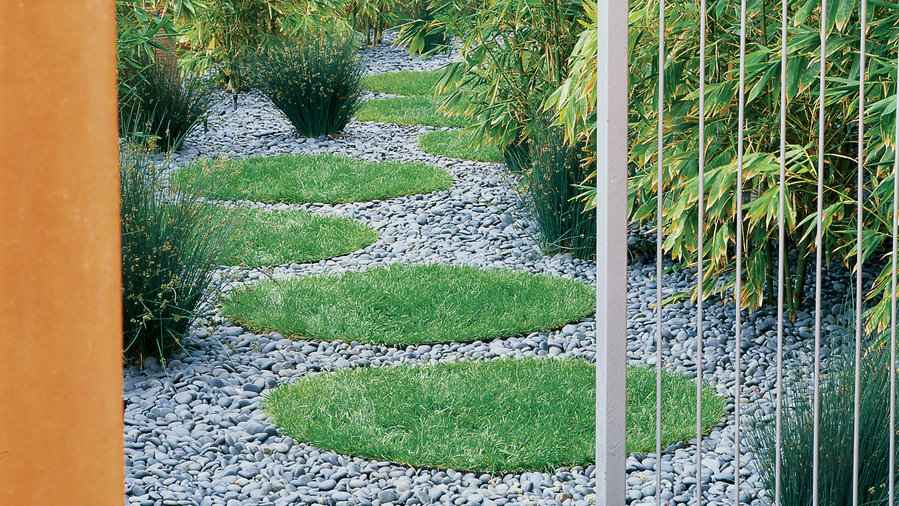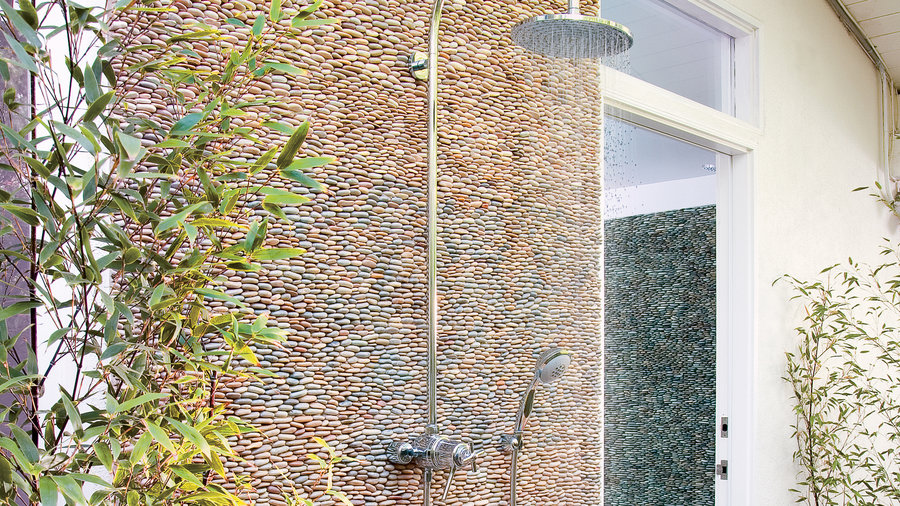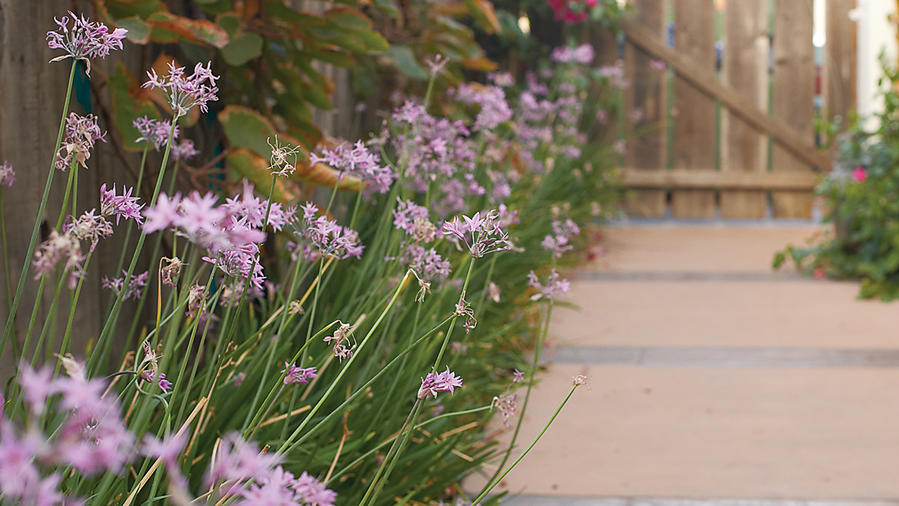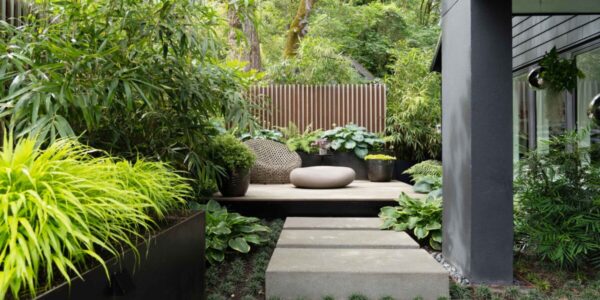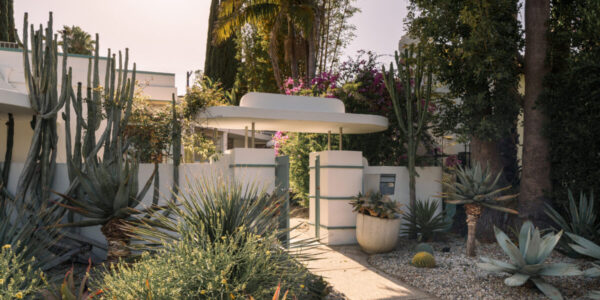Soothing garden escape
Long and skinny, this paved side yard in Portland looked like a bowling alley. That was, however, before someone took a jackhammer to it. With the concrete gone, landscape designer Darcy Daniels (bloomtown.net) used foliage to give the space a warm, lush feel. Rich goldenrod walls now set the mood, and drifts of gold-tinted perennials—Japanese forest grass, autumn fern, and ‘Bowles Golden’ sedge—reinforce it. Blue Hosta ‘Halcyon’ adds contrasting color, and Japanese maple and variegated fatshedera give a sense of volume. Now the soothing garden is a pleasure to walk through.
Thomas J. Story
Plant a border in pots
Enhancing a narrow in-ground bed is easy with a row of potted plants. In this small, shaded side yard, cylindrical chocolate brown pots filled with white cyclamen line up against the raised border’s low brick wall, making the fern-filled planting appear deeper than it is.
Rob D. Brodman
Colorful alfresco room
A California couple turned a narrow 15- by 30-foot corridor outside their home into a cozy, colorful alfresco living room with these five features we love:
- Trellis for shade. A coated aluminum trellis overhead provides some shade, but its opening lets through enough daylight to bathe a privacy wall and fountain.
- Floral backdrop. Plants that tolerate drought and heat―including gaura, lavender, and salvia―draw the eye toward the back fence.
- Longer patio. The new patio is roomier than the deck it replaced. Rosy cocoa tiles enhance the expansive feel, as do the pavers.
- Curving seat wall. Topped with Arizona flagstone, this distinctive feature curves from the patio’s end to the firepit.
- Fountain. A freestanding, stucco-faced wall, built 3 feet in from the property line and painted a rich persimmon hue, helps mask a neighbor’s home. Water passes through a slit near the wall’s top and falls through a bed of cobbles into an underground basin, then recirculates.
Thomas J. Story
Plant on wheels
If you like to rearrange your side yard a lot, grow plants in containers for mobility, and put casters on the largest ones. This gives you flexibility to move plants around as the sun exposure changes, or if you’re entertaining.
Thomas J. Story
Tropical paradise
Turn your side yard into an exotic outdoor destination. A jungly planting theme gives a tantalizing glimpse of the oasis beyond.
Marion Brenner
Potting station
Turn a small side yard into an intimate nook that can double as a potting station and a space to unwind.
Jeffery Cross
Carefree containers
Dotting your space with containers is an easy way to add cheer. Take the stylish and easy route by using self-watering containers, which you can make yourself by following these simple steps:
- Start with a thin-walled, nonporous pot (at least 12 inches wide and 16 inches high) that has no drainage hole but will be easy to drill into—like the plastic ones shown here (IKEA has a nice selection). Drill a 1/4-inch- wide hole into its side, about 4 inches up from the bottom.
- Take a smaller plastic pot— roughly 6 by 6 inches—and drill 1/4-inch-wide holes, a few inches apart, into the sides and bottom. Fill with potting soil, then center in the bottom of the large container. (If your large pot is wide, like the one shown above right, use two small pots.)
- Cut a disc of sturdy plastic (we used the lid of an old storage bin) to fit securely in- side the large pot when sitting on top of the soil- filled one. Drill 1/4-inch holes, an inch apart, in the disc. Cut a 1-inch-wide hole near the disc’s edge, then place the disc on the pot, inside the large container.
- Cut a length of 1-inch PVC pipe that’s slightly longer than the height of the large container. Cut the bottom of the pipe at an angle (so it won’t clog), and insert the pipe through the 1-inch hole in the disc. Push pipe as far into the big pot as it will go.
- Set your plant on the plastic disc (next to the pipe). Fill in the space around it with potting soil, mixed with some controlled-release organic fertilizer, to 1 to 2 inches below the pot’s rim. (Don’t worry if some soil falls through to the reservoir below.)
- Cover the top of the soil with plastic sheeting, cutting an X in it to let the plant through and tucking it down into the sides of the pot. Hide the plastic with a layer of rock or bark. Pour water down the pipe until it flows from the drainage hole. Refill as needed, likely once or twice a week.
Marion Brenner
Space to play
Have little ones? Make unused space a haven for fun. A recycled playhouse marks the entry to this side yard. Stepping-stones leading up to the pale blue bench were cut from the former driveway then set in Salmon Bay pebbles; a red-flowering currant supplies spring color.
Bill Ross
Stone bricks
Update grassy strips with stone bricks. This Portland property forms a curving path that double duties as an even and porous walking ground.
Steven Gunther
Bold shapes
In this stylish side yard, grass circles appear to float on a river of black pebbles that winds through a grove of bamboo.
Art Gray
Cooling off
A side yard is a great place to install an intimate outdoor shower. Here, interlocking 4- by 12-inch tiles faced with pebbles create an eye-catching texture for the back-splash.
Thomas J. Story
Easy elements
A society garlic border and a new path brighten this once-plain side yard.
